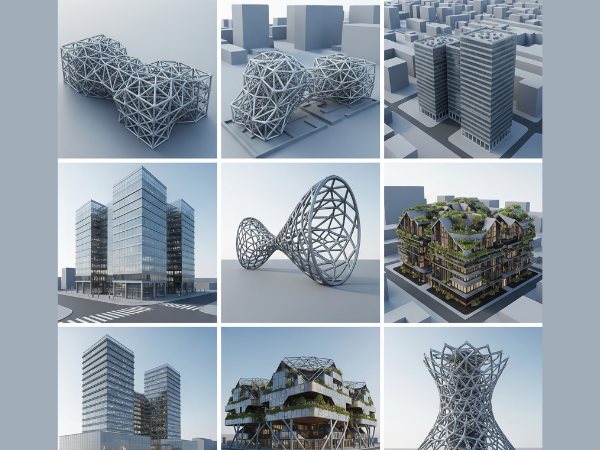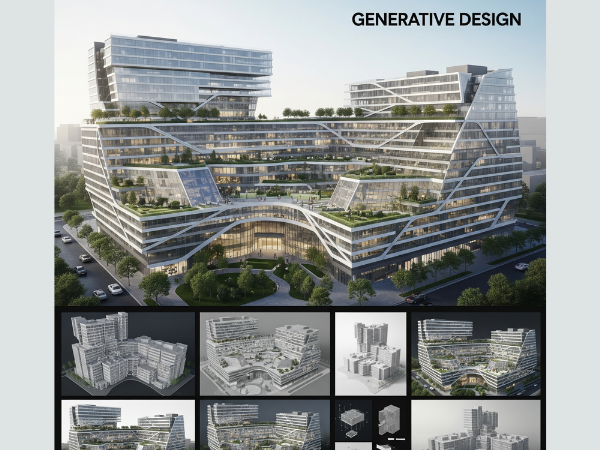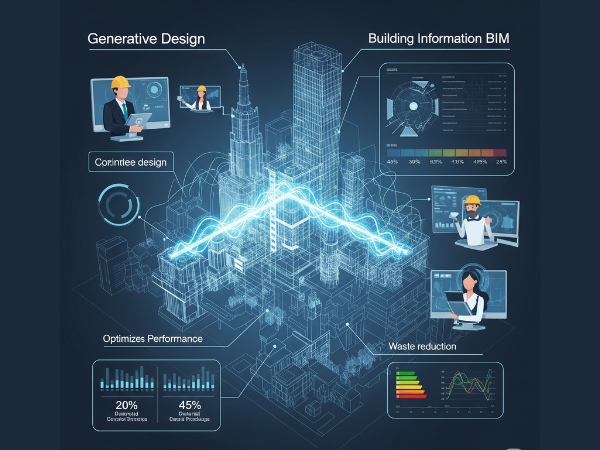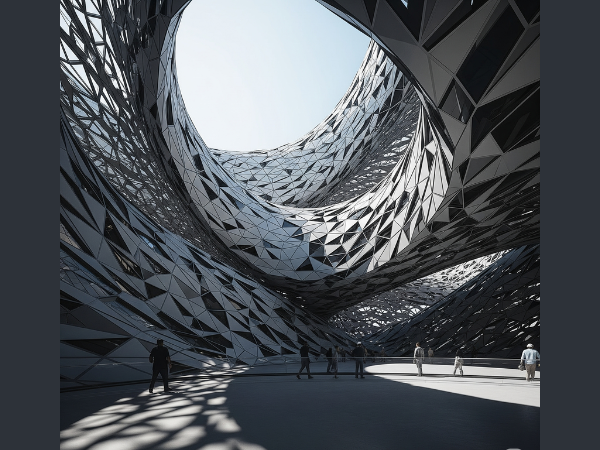In the rapidly evolving fields of architecture and engineering, the quest for efficiency, innovation, and sustainability is constant. Traditional design methods, while foundational, often present limitations when faced with complex challenges and the demand for increasingly intricate and optimized solutions. This is where Generative Design emerges as a transformative force, revolutionizing how we conceive, develop, and construct our built environment.

What is Generative Design?
At its core, Generative Design is an iterative process that leverages algorithms and artificial intelligence to explore a vast array of design possibilities based on a defined set of constraints and goals. Unlike conventional design, where a human designer creates a single solution, generative design systems generate numerous permutations, allowing designers to evaluate and select the most optimal outcomes. It’s not about replacing human creativity but augmenting it, enabling designers to push boundaries and discover solutions that might otherwise be overlooked.
The process typically involves:
- Defining Parameters: Designers specify the desired outcomes, such as structural integrity, material efficiency, cost, environmental performance, or aesthetic criteria.
- Setting Constraints: Limitations are established, including building codes, site conditions, manufacturing capabilities, and material properties.
- Generating Solutions: The generative design software uses algorithms to produce thousands, or even millions, of design options that adhere to the defined parameters and constraints.
- Evaluating and Iterating: Designers analyze the generated solutions, often visualized through advanced simulations, to identify the most promising options. This feedback loop allows for refinement of parameters and constraints for subsequent generations.
Generative Design in Modern Architecture:-
For architects, generative design offers unprecedented opportunities to explore complex geometries, optimize spatial arrangements, and integrate performance-driven considerations from the earliest stages of a project. Imagine designing a facade that not only looks striking but also dynamically adjusts to sunlight for optimal energy efficiency, or a building layout that maximizes natural ventilation and daylighting.
- Form and Function Optimization: Architects can use Generative Design to optimize building forms for various criteria, such as maximizing views, minimizing solar gain, or creating aesthetically pleasing and structurally sound envelopes. This capability leads to more innovative and often organic designs that are both beautiful and highly functional.
- Sustainable Structures: With the growing emphasis on sustainability, Generative Design becomes an invaluable tool. It can help architects minimize material waste by optimizing structural elements, design buildings that consume less energy, and even explore biomorphic designs that mimic natural systems for enhanced environmental performance. This directly contributes to the creation of more eco-friendly approaches in modern construction and from risk to resilience, tackling climate change.
- Personalization and Customization: Generative design can facilitate the creation of highly customized architectural elements, from bespoke interior fittings to unique building components, catering to specific client needs and aesthetic preferences.
- Early-Stage Exploration: By rapidly generating and evaluating numerous design alternatives in the initial phases, architects can make informed decisions earlier, reducing costly revisions later in the design process.

Generative Design in Modern Engineering:-
In the realm of engineering, particularly structural engineering, generative design holds immense promise for optimizing performance, reducing material usage, and enhancing overall structural integrity. Engineers can leverage this technology to design components and systems that are stronger, lighter, and more efficient than those conceived through traditional methods.
- Structural Optimization: Generative Design excels at optimizing structural elements for maximum strength with minimal material. This is particularly crucial in projects like bridges or high-rise buildings, where weight and material efficiency are paramount. It can help engineers tackle challenges and solutions for high-rise buildings.
- Material Efficiency: By exploring intricate geometries and load paths, generative design can significantly reduce the amount of material required for a given structural performance. This not only lowers costs but also minimizes the environmental impact of construction.
- Complex Component Design: For intricate components in mechanical or civil engineering, Generative Design can rapidly generate and test designs that meet specific performance criteria, such as heat dissipation, fluid dynamics, or stress distribution.
- Performance-Driven Design: Engineers can define performance objectives, and the generative design system will produce designs that best achieve those objectives, whether it’s maximizing load-bearing capacity, minimizing deflection, or improving durability. This contributes to understanding the impact of material selection on structural integrity.
- Parametric Design Integration: Generative Design often works hand-in-hand with parametric design, where design elements are controlled by parameters. This allows engineers to easily modify and adapt designs based on changing requirements or conditions. This also aligns with the importance of understanding how to read a structural engineering report and choosing the right structural engineer.
The Interplay with BIM and the Future of AEC:-
The integration of Generative Design with Building Information Modeling (BIM) is a game-changer for the Architecture, Engineering, and Construction (AEC) industry. BIM provides a centralized, intelligent model of a project, and generative design can leverage this data to inform its algorithms and populate the BIM model with optimized solutions. This symbiotic relationship enhances collaboration, reduces errors, and streamlines the entire project lifecycle.
As we look to the future, Generative Design will play an increasingly vital role in shaping how we design and build. It will empower designers and engineers to:
- Innovate Faster: Rapidly explore and validate novel design concepts.
- Optimize Performance: Create structures and systems that are more efficient, resilient, and sustainable.
- Reduce Costs and Waste: Minimize material usage and streamline construction processes.
- Address Complex Challenges: Tackle previously insurmountable design problems with computational power.
The shift towards Generative Design is not merely a technological upgrade; it’s a paradigm shift in the design process itself. It demands a new skillset from professionals in the AEC industry, emphasizing computational thinking, data analysis, and an understanding of algorithmic principles. Ultimately, Generative Design is a smart gateway to a future-ready AEC career, enabling us to build a more resilient, efficient, and inspiring built environment. The future of structural engineering is truly exciting with these trends and innovations.

FAQs:-
Q1: What is Generative Design and how does it differ from traditional design?
A1: Generative Design is an AI-driven process that explores thousands of design possibilities based on defined goals and constraints, allowing designers to select optimal solutions. Traditional design typically involves a human designer creating a single solution without algorithmic exploration.
Q2: What are the main benefits of using Generative Design in architecture?
A2: In architecture, Generative Design helps optimize building forms for function and aesthetics, promotes sustainable design by minimizing waste and energy consumption, enables high levels of personalization, and facilitates rapid early-stage design exploration.
Q3: How does Generative Design impact structural engineering?
A3: For structural engineers, Generative Design optimizes structural components for strength and material efficiency, reduces material usage, aids in designing complex components, and drives performance-based design, leading to stronger, lighter, and more efficient structures.
Q4: Is Generative Design meant to replace human designers?
A4: No, Generative Design is not intended to replace human creativity. Instead, it augments the design process by providing powerful computational tools that allow designers to explore a wider range of possibilities and discover innovative solutions that might otherwise be missed.
Q5: How does Generative Design integrate with Building Information Modeling (BIM)?
A5: Generative Design can leverage data from BIM models to inform its algorithms and then populate the BIM model with optimized design solutions. This integration enhances collaboration, reduces errors, and streamlines the entire project lifecycle in the AEC industry.
Read More On:-
For more information about engineering, architecture, and the building & construction sector, go through the posts related to the same topic on the Specuwin Blog Page.
Find out more accurately what we are going to take off in the course of applying leading new technologies and urban design at Specuwin.
